Hexarelin 5mg
Hexarelin 5mg
Hexarelin, a synthetic growth hormone-releasing peptide, promotes muscle growth and fat loss, improves cardiovascular health, enhances recovery and healing, and boosts lipid metabolism (PMID: 28977588, PMID: 10465272, PMID: 29756411,PMID: 25645463 ).
Hexarelin, a synthetic growth hormone-releasing peptide, offers multiple benefits, including:
- Muscle Growth and Strength: Hexarelin stimulates the release of growth hormone, which promotes muscle hypertrophy and increased strength, making it popular among bodybuilders and athletes (PMID: 28977588).
- Fat Loss: By enhancing growth hormone levels, Hexarelin aids in lipolysis, leading to reduced body fat and improved body composition (PMID: 28977588).
- Cardiovascular Health: Hexarelin has shown potential in improving cardiovascular function. It can enhance cardiac output, left ventricular ejection fraction, and reduce peripheral resistance. Additionally, it may protect against ischemia-reperfusion injury, reduce cardiac fibrosis, and mitigate atherosclerosis (PMID: 10465272).
- Improved Recovery and Healing: The peptide accelerates recovery from injuries by promoting tissue repair and collagen production, benefiting athletes and individuals recovering from physical trauma (PMID: 29756411).
- Enhanced Lipid Metabolism: Hexarelin improves lipid profiles by reducing plasma triglycerides and liver triglycerides, which could contribute to better metabolic health (PMID: 25645463).
Peer-Reviewed Studies
Zambelli, V., Rizzi, L., Delvecchio, P., Bresciani, E., Rezoagli, E., Molteni, L., Meanti, R., Cuttin, M. S., Bovo, G., Coco, S., Omeljaniuk, R. J., Locatelli, V., Bellani, G., & Torsello, A. (2021). Drug target insights, 15, 26–33.
Rahim, A., O’Neill, P. A., & Shalet, S. M. (1998). The Journal of clinical endocrinology and metabolism, 83(5), 1644–1649.
Structure

Source: PubChem
Sequence: His-D-Trp(2-Me )-Ala-Trp-D-Phe-Lys Molecular Formula: C41HsaN1206
Molecular Weight: 887 .059 g/mol
PubChem CID:6918297
CAS Number: 140703-51-1
Hexarelin Effects
1. Protects the Heart
Hexarelin directly affects the heart by binding to the CD36 receptor and the growth hormone secretagogue receptor (GHSR). Studies in mice suggest Hexarelin protects heart cells from injury in the setting of heart attack by binding to these receptors and preventing cells from undergoing apoptosis (programmed cell death). Mice treated with Hexarelin in this study showed improved heart function, increased number of surviving heart cells, and decreased production of malondialdehyde (a marker of heart cell death). Interestingly, GHRP-6 was found to be slightly superior to ghrelin in this study [1] [2].
A study in rats investigating the ability of GHRP-6 to offset problems associated with heart failure found that the peptide reduces oxidative stress in heart failure and prevents myocardial remodeling from taking place. Remodeling is a pathological process associated with a decline in heart function and serious morbidity. Rat streated with GHRP-6 in this study had significant improvements in the function of their heart. These processes are thought to be mediated by GHRP-6 up-regulation of phosphatase and tensin homologue(PTEN) activity as well as down regulation of protein kinase B expression [3]. PTEN plays a role in cell regeneration while protein kinase B regulates cell survival.
GHRP-6 is so effective in reducing cardiac remodeling that it shifts the balance of nervous system activity away from sympathetic stimulation (higher heart rate, higher blood pressure, etc.) toward parasympathetic dominance. This not only improves short-term health and outcomes, but reduces the need for medication over the long term and likely helps to prevent cardiac remodeling that is secondary to increased stress on the heart. Rats treated with GHRP-6 following a heart attack show substantial reductions in the size of the scar left behind [4] [5].
Because the mechanism by which Hexarelin protects heart cells is not specific to the mechanism of damage in heart attack, researchers speculated that the peptide could be used to protect the heart from other insults as well. Research, again in rats, found that Hexarelin improved cardiac function in a model of diabetes by changing the way calcium and potassium are processed by heart muscle cells[6],[7],[8].

Diagram showing progression to serious long-term disease following heart attack. Blue ovals indicate how Hexarelin interferes with this pathway. Source: PubMed
2. Improves Fat Measures
Dyslipidemia refers to an abnormal amount of fat in the blood. Interestingly, dyslipidemia is an independent risk factor for the development of diabetes, even in thin and outwardly healthy individuals. In fact, dyslipidemia may help to explain the current diabetes crisis in first-world nations and understanding its effects on human physiology is paramount to combating the growing health concerns associated with modern diets. Research in rats indicates that GHRP-6 can correct dyslipidemia in the setting of insulin resistance (the first step in the pathway to diabetes) while simultaneously lowering blood sugar and insulin resistance [9]. The Peptide may offer an alternative to current lipid medications for the treatment of severe dyslipidemia.
3. Protects Muscle
It isn’t just heart muscle that Hexarelin protects. Studies in rat models of cachexia (extreme weight loss due to illness or chemotherapy) indicate that GHRP-6 protects muscle cells by regulating calcium flow as well as mitochondrial dysfunction [10]. Mitochondria are the power plants of cells. Without them, cells cannot produce the energy they need to carry out normal function and will eventually die.
Calcium regulation is often disrupted by chemotherapy. Calcium dysregulation is one of the primary reasons that muscle mass and lean body mass are affected during cancer treatment. Research in rats indicatesGHRP-6 offsets the alterations in calcium regulation caused by chemotherapy [11].
Hexarelin Heavily Researched
Heart disease is the leading cause of death in most developed nations. Understanding the complex process that leads to heart disease, heart failure, and eventually death is not easy, but scientists are beginning to unravel the mystery with help from peptides like Hexarelin. Research utilizing Hexarelin has revealed a number of new pathways for understanding the function of the heart in health and disease. It has also opened the door to develop new treatments for problems, like cardiac remodeling, that have proved difficult to treat in the past.
Hexarelin exhibits moderate side effects, low oral and excellent subcutaneous bioavailability in mice. Per kg dosage in mice does not scale to humans. Hexarelin for sale at Life Link Research is limited to educational and scientific research only, not for human consumption.
Article Author
The above literature was researched, edited and organized by Dr. Logan, M.D. Dr. Logan holds a doctorate degree from Case Western Reserve University School of Medicine and a B.S. in molecular biology.
Scientific Journal Author
Aline Moulin’s research while affiliated with French National Centre for Scientific Research and other places are extensive. She is well versed in pharmaceutical development, management, external manufacturing operations, quality control, regulatory control, drug delivery, and drug discovery research. She has used Hexarelin in multiple studies to monitor if certain pharmaceuticals were capable of inhibiting many of its effects.
Aline Moulin is being referenced as one of the leading scientists involved in the research and development of Hexarelin. In no way is this doctor/scientist endorsing or advocating the purchase, sale, or use of this product for any reason. There is no affiliation or relationship, implied or otherwise, between Life Link Research and this doctor. The purpose of citing the doctor is to acknowledge, recognize, and credit the exhaustive research and development efforts conducted by the scientists studying this peptide. Aline Moulin is listed in [12] under the referenced citations.
Referenced Citations
- J. Huang, Y. Li, J. Zhang, Y. Liu, and Q. Lu, “The Growth Hormone Secretagogue Hexarelin Protects Rat Cardiomyocytes From in vivo Ischemia/Reperfusion Injury Through Interleukin-1 Signaling Pathway,” Int. Heart. J., vol. 58, no. 2, pp. 257–263, Apr. 2017.
- Y. Mao et al., “Hexarelin treatment in male ghrelin knockout mice after myocardial infarction,” Endocrinology, vol. 154, no. 10, pp. 3847–3854, Oct. 2013.
- E. Agbo et al., “Modulation of PTEN by Hexarelin attenuates coronary artery ligation-induced heart failure in rats,” Turk. J. Med. Sci., vol. 49, no. 3, May 2019.
- H. McDonald et al., “Hexarelin treatment preserves myocardial function and reduces cardiac fibrosis in mouse model of acute myocardial infarction,” Physiol. Rep., vol. 6, no. 9, p. e13699, 2018.
- X. Xu et al., “Chronic administration of Hexarelin attenuates cardiac fibrosis in the spontaneously hypertensive rat,” Am. J. Physiol. Heart Circ. Physiol., vol. 303, no. 6, pp. H703-711, Sep. 2012.
- X. Zhang, L. Qu, L. Chen, and C. Chen, “Improvement of cardiomyocyte function by in vivo Hexarelin treatment in streptozotocin-induced diabetic rats,” Physiol. Rep., vol. 6, no. 4, 2018.
- Y. Mao, T. Tokudome, I. Kishimoto, K. Otani, M. Miyazato, and K. Kangawa, “One dose of oral Hexarelin protects chronic cardiac function after myocardial infarction,” Peptides, vol. 56, pp. 156–162, Jun. 2014.
- Y. Ma, L. Zhang, J. N. Edwards, B. S. Launikonis, and C. Chen, “Growth hormone secretagogues protect mouse cardiomyocytes from in vitro ischemia/reperfusion injury through regulation of intracellular calcium,” PloS One, vol. 7, no. 4, p. e35265, 2012.
- R. Mosa et al., “Hexarelin, a Growth Hormone Secretagogue, Improves Lipid Metabolic Aberrations inNonobese Insulin-Resistant Male MKR Mice,” Endocrinology, vol. 158, no. 10, pp. 3174–3187, 012017.
- G. Sirago et al., “Growth hormone secretagogues hexarelin and JMV2894 protect skeletal muscle from mitochondrial damages in a rat model of cisplatin-induced cachexia,” Sci. Rep., vol. 7, Oct.2017.
- E. Conte et al., “Growth hormone secretagogues prevent dysregulation of skeletal muscle calcium homeostasis in a rat model of cisplatin-induced cachexia,” J. Cachexia Sarcopenia Muscle, vol. 8, no.3, pp. 386–404, Jun. 2017.
- Torsello, Antonio & Bresciani, Elena & Tamiazzo, Laura & Bulgarelli, Ilaria & Caporali, Simona &Moulin, Aline & Fehrentz, jean-alain & Martinez, Jean & Perissoud, Daniel & Locatelli, Vittorio. (2008). Novel potent and selective non-peptide ligands of ghrelin receptor : characterization of endocrine and extra endocrine actions.
$44.00
Description
Hexarelin, a synthetic growth hormone-releasing peptide, promotes muscle growth and fat loss, improves cardiovascular health, enhances recovery and healing, and boosts lipid metabolism (PMID: 28977588, PMID: 10465272, PMID: 29756411,PMID: 25645463 ).
Hexarelin, a synthetic growth hormone-releasing peptide, offers multiple benefits, including:
- Muscle Growth and Strength: Hexarelin stimulates the release of growth hormone, which promotes muscle hypertrophy and increased strength, making it popular among bodybuilders and athletes (PMID: 28977588).
- Fat Loss: By enhancing growth hormone levels, Hexarelin aids in lipolysis, leading to reduced body fat and improved body composition (PMID: 28977588).
- Cardiovascular Health: Hexarelin has shown potential in improving cardiovascular function. It can enhance cardiac output, left ventricular ejection fraction, and reduce peripheral resistance. Additionally, it may protect against ischemia-reperfusion injury, reduce cardiac fibrosis, and mitigate atherosclerosis (PMID: 10465272).
- Improved Recovery and Healing: The peptide accelerates recovery from injuries by promoting tissue repair and collagen production, benefiting athletes and individuals recovering from physical trauma (PMID: 29756411).
- Enhanced Lipid Metabolism: Hexarelin improves lipid profiles by reducing plasma triglycerides and liver triglycerides, which could contribute to better metabolic health (PMID: 25645463).
Peer-Reviewed Studies
Zambelli, V., Rizzi, L., Delvecchio, P., Bresciani, E., Rezoagli, E., Molteni, L., Meanti, R., Cuttin, M. S., Bovo, G., Coco, S., Omeljaniuk, R. J., Locatelli, V., Bellani, G., & Torsello, A. (2021). Drug target insights, 15, 26–33.
Rahim, A., O’Neill, P. A., & Shalet, S. M. (1998). The Journal of clinical endocrinology and metabolism, 83(5), 1644–1649.
Structure

Source: PubChem
Sequence: His-D-Trp(2-Me )-Ala-Trp-D-Phe-Lys Molecular Formula: C41HsaN1206
Molecular Weight: 887 .059 g/mol
PubChem CID:6918297
CAS Number: 140703-51-1
Hexarelin Effects
1. Protects the Heart
Hexarelin directly affects the heart by binding to the CD36 receptor and the growth hormone secretagogue receptor (GHSR). Studies in mice suggest Hexarelin protects heart cells from injury in the setting of heart attack by binding to these receptors and preventing cells from undergoing apoptosis (programmed cell death). Mice treated with Hexarelin in this study showed improved heart function, increased number of surviving heart cells, and decreased production of malondialdehyde (a marker of heart cell death). Interestingly, GHRP-6 was found to be slightly superior to ghrelin in this study [1] [2].
A study in rats investigating the ability of GHRP-6 to offset problems associated with heart failure found that the peptide reduces oxidative stress in heart failure and prevents myocardial remodeling from taking place. Remodeling is a pathological process associated with a decline in heart function and serious morbidity. Rat streated with GHRP-6 in this study had significant improvements in the function of their heart. These processes are thought to be mediated by GHRP-6 up-regulation of phosphatase and tensin homologue(PTEN) activity as well as down regulation of protein kinase B expression [3]. PTEN plays a role in cell regeneration while protein kinase B regulates cell survival.
GHRP-6 is so effective in reducing cardiac remodeling that it shifts the balance of nervous system activity away from sympathetic stimulation (higher heart rate, higher blood pressure, etc.) toward parasympathetic dominance. This not only improves short-term health and outcomes, but reduces the need for medication over the long term and likely helps to prevent cardiac remodeling that is secondary to increased stress on the heart. Rats treated with GHRP-6 following a heart attack show substantial reductions in the size of the scar left behind [4] [5].
Because the mechanism by which Hexarelin protects heart cells is not specific to the mechanism of damage in heart attack, researchers speculated that the peptide could be used to protect the heart from other insults as well. Research, again in rats, found that Hexarelin improved cardiac function in a model of diabetes by changing the way calcium and potassium are processed by heart muscle cells[6],[7],[8].

Diagram showing progression to serious long-term disease following heart attack. Blue ovals indicate how Hexarelin interferes with this pathway. Source: PubMed
2. Improves Fat Measures
Dyslipidemia refers to an abnormal amount of fat in the blood. Interestingly, dyslipidemia is an independent risk factor for the development of diabetes, even in thin and outwardly healthy individuals. In fact, dyslipidemia may help to explain the current diabetes crisis in first-world nations and understanding its effects on human physiology is paramount to combating the growing health concerns associated with modern diets. Research in rats indicates that GHRP-6 can correct dyslipidemia in the setting of insulin resistance (the first step in the pathway to diabetes) while simultaneously lowering blood sugar and insulin resistance [9]. The Peptide may offer an alternative to current lipid medications for the treatment of severe dyslipidemia.
3. Protects Muscle
It isn’t just heart muscle that Hexarelin protects. Studies in rat models of cachexia (extreme weight loss due to illness or chemotherapy) indicate that GHRP-6 protects muscle cells by regulating calcium flow as well as mitochondrial dysfunction [10]. Mitochondria are the power plants of cells. Without them, cells cannot produce the energy they need to carry out normal function and will eventually die.
Calcium regulation is often disrupted by chemotherapy. Calcium dysregulation is one of the primary reasons that muscle mass and lean body mass are affected during cancer treatment. Research in rats indicatesGHRP-6 offsets the alterations in calcium regulation caused by chemotherapy [11].
Hexarelin Heavily Researched
Heart disease is the leading cause of death in most developed nations. Understanding the complex process that leads to heart disease, heart failure, and eventually death is not easy, but scientists are beginning to unravel the mystery with help from peptides like Hexarelin. Research utilizing Hexarelin has revealed a number of new pathways for understanding the function of the heart in health and disease. It has also opened the door to develop new treatments for problems, like cardiac remodeling, that have proved difficult to treat in the past.
Hexarelin exhibits moderate side effects, low oral and excellent subcutaneous bioavailability in mice. Per kg dosage in mice does not scale to humans. Hexarelin for sale at Life Link Research is limited to educational and scientific research only, not for human consumption.
Article Author
The above literature was researched, edited and organized by Dr. Logan, M.D. Dr. Logan holds a doctorate degree from Case Western Reserve University School of Medicine and a B.S. in molecular biology.
Scientific Journal Author
Aline Moulin’s research while affiliated with French National Centre for Scientific Research and other places are extensive. She is well versed in pharmaceutical development, management, external manufacturing operations, quality control, regulatory control, drug delivery, and drug discovery research. She has used Hexarelin in multiple studies to monitor if certain pharmaceuticals were capable of inhibiting many of its effects.
Aline Moulin is being referenced as one of the leading scientists involved in the research and development of Hexarelin. In no way is this doctor/scientist endorsing or advocating the purchase, sale, or use of this product for any reason. There is no affiliation or relationship, implied or otherwise, between Life Link Research and this doctor. The purpose of citing the doctor is to acknowledge, recognize, and credit the exhaustive research and development efforts conducted by the scientists studying this peptide. Aline Moulin is listed in [12] under the referenced citations.
Referenced Citations
- J. Huang, Y. Li, J. Zhang, Y. Liu, and Q. Lu, “The Growth Hormone Secretagogue Hexarelin Protects Rat Cardiomyocytes From in vivo Ischemia/Reperfusion Injury Through Interleukin-1 Signaling Pathway,” Int. Heart. J., vol. 58, no. 2, pp. 257–263, Apr. 2017.
- Y. Mao et al., “Hexarelin treatment in male ghrelin knockout mice after myocardial infarction,” Endocrinology, vol. 154, no. 10, pp. 3847–3854, Oct. 2013.
- E. Agbo et al., “Modulation of PTEN by Hexarelin attenuates coronary artery ligation-induced heart failure in rats,” Turk. J. Med. Sci., vol. 49, no. 3, May 2019.
- H. McDonald et al., “Hexarelin treatment preserves myocardial function and reduces cardiac fibrosis in mouse model of acute myocardial infarction,” Physiol. Rep., vol. 6, no. 9, p. e13699, 2018.
- X. Xu et al., “Chronic administration of Hexarelin attenuates cardiac fibrosis in the spontaneously hypertensive rat,” Am. J. Physiol. Heart Circ. Physiol., vol. 303, no. 6, pp. H703-711, Sep. 2012.
- X. Zhang, L. Qu, L. Chen, and C. Chen, “Improvement of cardiomyocyte function by in vivo Hexarelin treatment in streptozotocin-induced diabetic rats,” Physiol. Rep., vol. 6, no. 4, 2018.
- Y. Mao, T. Tokudome, I. Kishimoto, K. Otani, M. Miyazato, and K. Kangawa, “One dose of oral Hexarelin protects chronic cardiac function after myocardial infarction,” Peptides, vol. 56, pp. 156–162, Jun. 2014.
- Y. Ma, L. Zhang, J. N. Edwards, B. S. Launikonis, and C. Chen, “Growth hormone secretagogues protect mouse cardiomyocytes from in vitro ischemia/reperfusion injury through regulation of intracellular calcium,” PloS One, vol. 7, no. 4, p. e35265, 2012.
- R. Mosa et al., “Hexarelin, a Growth Hormone Secretagogue, Improves Lipid Metabolic Aberrations inNonobese Insulin-Resistant Male MKR Mice,” Endocrinology, vol. 158, no. 10, pp. 3174–3187, 012017.
- G. Sirago et al., “Growth hormone secretagogues hexarelin and JMV2894 protect skeletal muscle from mitochondrial damages in a rat model of cisplatin-induced cachexia,” Sci. Rep., vol. 7, Oct.2017.
- E. Conte et al., “Growth hormone secretagogues prevent dysregulation of skeletal muscle calcium homeostasis in a rat model of cisplatin-induced cachexia,” J. Cachexia Sarcopenia Muscle, vol. 8, no.3, pp. 386–404, Jun. 2017.
- Torsello, Antonio & Bresciani, Elena & Tamiazzo, Laura & Bulgarelli, Ilaria & Caporali, Simona &Moulin, Aline & Fehrentz, jean-alain & Martinez, Jean & Perissoud, Daniel & Locatelli, Vittorio. (2008). Novel potent and selective non-peptide ligands of ghrelin receptor : characterization of endocrine and extra endocrine actions.




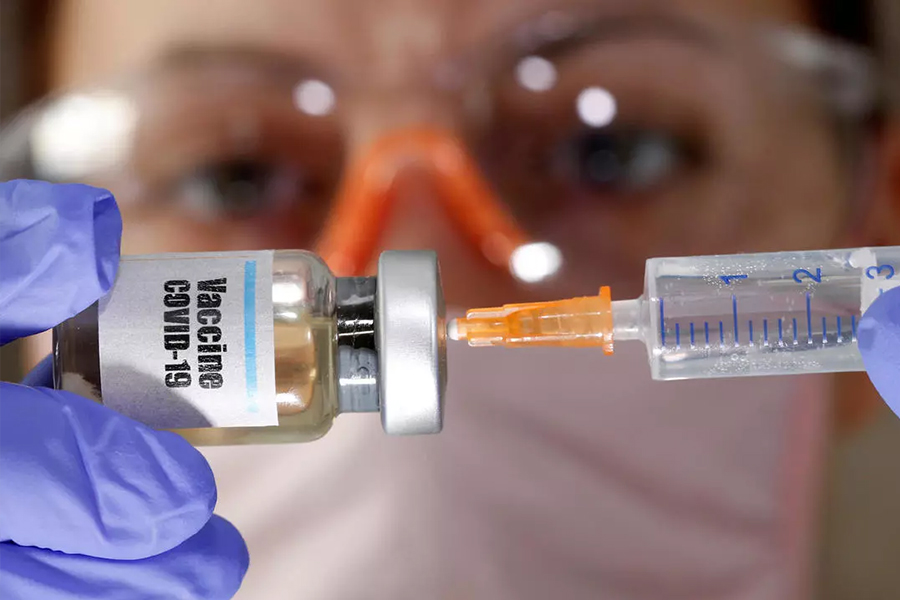

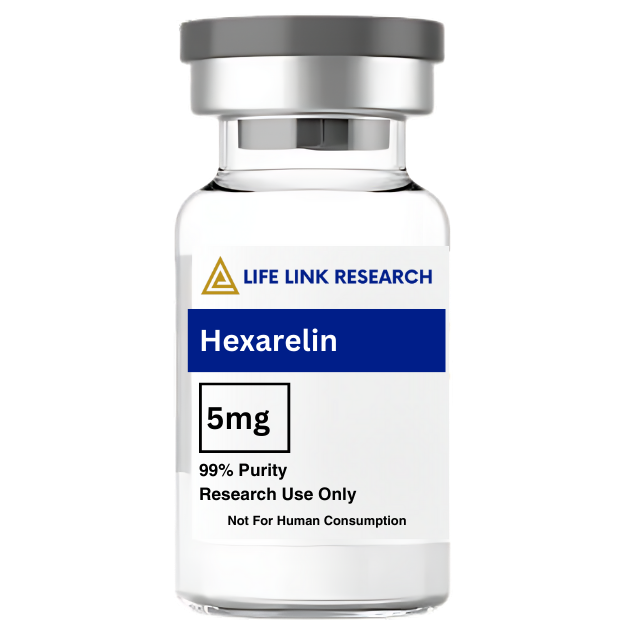
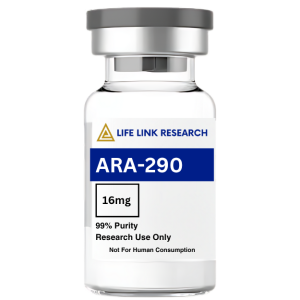

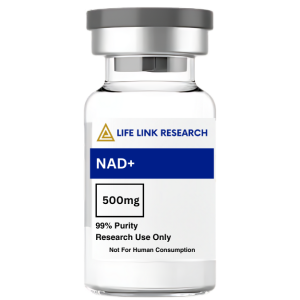
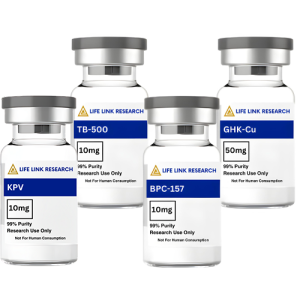
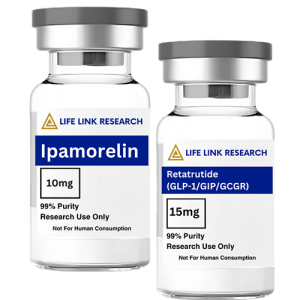
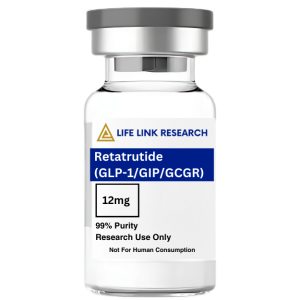


Reviews
There are no reviews yet.